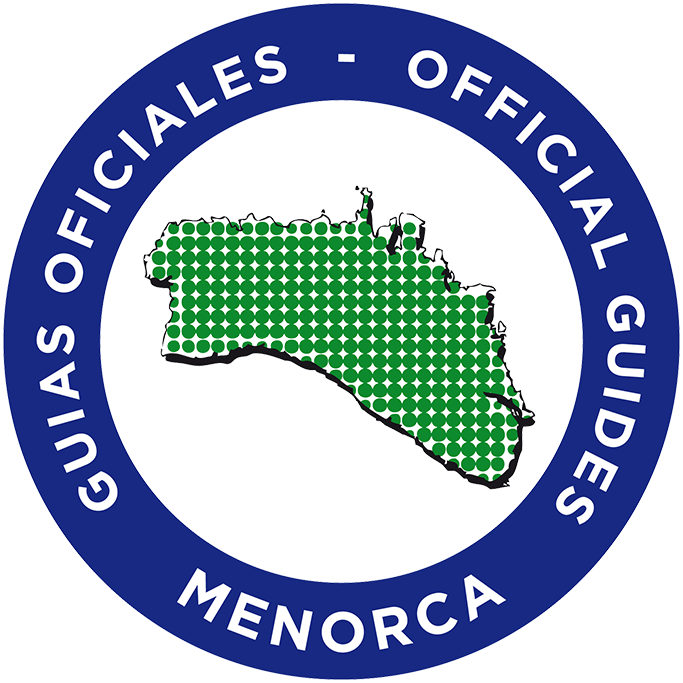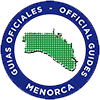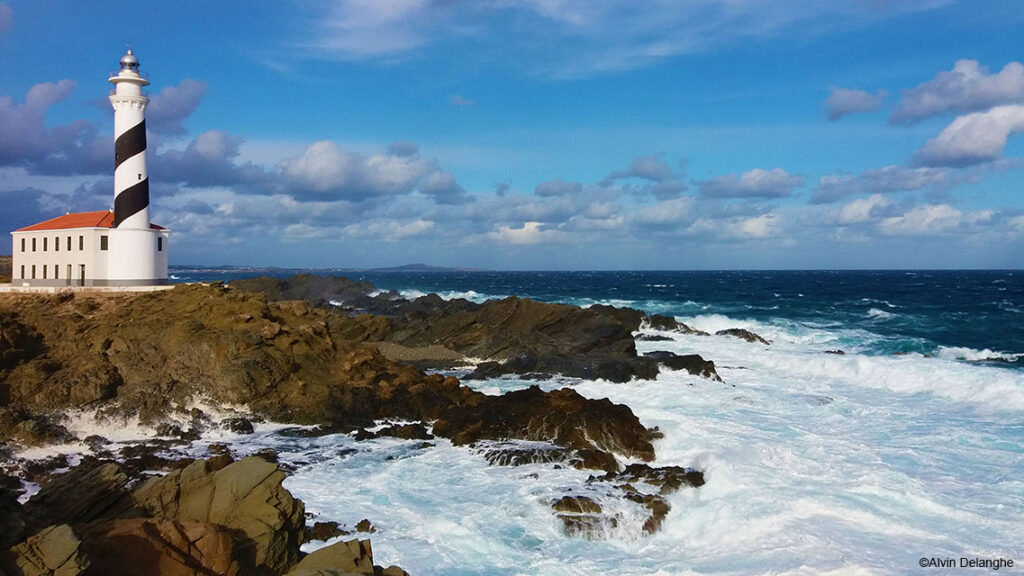Content
Prehistoric
With more than 1,500 sites cataloged in an area of just 700km², 1,200 of which are from prehistoric times, Menorca boasts an unrivaled historical heritage, especially with regard to the Talayotic culture that embraces the period from the arrival of the first inhabitants to the island about 4,200 years ago until the Roman conquest in 123 BC.
A network of outstanding pre- and protohistoric constructions turns the island into a authentic open-air museum: up to fifteen types of constructions with various functions have been identified, including: talayots, megalithic tombs, hypogea, natural caves with cyclopean walls, wells and hypostyle chambers, in addition to the well-known navetas and taulas, exclusive to Menorca.
Standing out for their uniqueness, monumentality, abundance and good state of conservation, these constructions constitute the only trace of the archaic Mediterranean society that inhabited the island. For this reason, the candidacy “Talayotic Menorca” has been presented to UNESCO with a selection of nine representative territorial areas for it to be considered as a World Heritage Site.
Military
Today Menorca is famous for its tranquility. But it hasn’t always been like this! In fact Menorca and the Menorcans have lived an extremely tough history of conquests and reconquests, as well as being battered and sacked by the Barbary pirates.
Nevertheless, the Menorcans have known how to defend themselves and, indeed, the Menorcan slingers who fought alongside both Hannibal and Julius Cesar were renowned as the best in the classical world.
There are few destinations in Menorca that do not bear a scar from some past battle. Visits to many Menorcan towns take on another dimension when you hear the stories of past ferocious attacks and brave defences or when you round off the visit with a tour of the local defence tower.
However, the two fortresses which guard the mouth of the port of Mahon stand head and shoulders above the rest for their military, architectural, historical and human interest.
One of Menorca’s most visited monuments is the 19th century fortress of Isabel II (popularly known as La Mola) which is impressive not only for its massive size but also for the beauty of its construction and the ingenuity of its design. High on the cliffs two of what were once the biggest cannons in the world stand guard at the most easterly point of Spain. On the other hand, the fortress is also sadly known as being the location of an infamous military prison following the Civil War.
The fortress is a labyrinth and not everywhere is open to the general public, so to get the best out of your visit a qualified guide is highly recommended.
The other great fortress which guards the entrance to the port of Mahon is that of San Felipe (Saint Philip). Although much of the structure currently lies in ruins, stretches of the extensive underground galleries, some cunningly booby-trapped to keep the enemy at bay, have been made visitable. Only organized visits are allowed in this fortress.
The commanding presence of Fort Marlborough and the ‘Martello’ type of defensive towers are other prominent examples of the British legacy to be found along the Menorcan coast.
We can also find Spanish defense towers from the 18th century, watchtowers from the 16th and 17th centuries, as well as medieval towers, which these days are often attached to country houses, built to defend strategic points from possible enemy attacks, especially from the Barbary pirates.
During the Civil War, countless bunkers and trenches were also built which, although never really used, are testimony to this turbulent time in the island’s history.
Architectural
The current architectural configuration of Menorca throughout history has been strongly shaped by the different Spanish, French and British occupations and dominations over the course of its history.
All of them have had an influence on social customs as well as political and ecclesiastical organization. However, the imprint of so much cultural diversity is visible above all in their buildings and monuments, which we discover walking through the streets of the towns and cities, each one being so singular and different from the others, thereby giving each one their own identity.
Being an island, the urban architectural styles of Menorca differ chronologically from the classical European periods and they can be considered eclectic, that is, a mixture of late Catalan Gothic, Baroque, Neoclassical and also, in some cases, Renaissance.
The baroque style of the 17th and 18th centuries is more present in the western part due to the reconstruction of the old island capital, Ciutadella, after the Ottoman attack suffered in 1558 that practically destroyed most of the medieval and Muslim legacy of the city.
Even so, the principal element of the 13th century, the Cathedral of Menorca, among others,remains. Located in Ciutadella and the current headquarters of the Menorcan Diocese, it was built on the site of an old Arab mosque in the Catalan Gothic style. Later, among other reforms, a neoclassical portal was added to its facade.
The church of Santa Maria in Mahon and all the ecclesiastical buildings on the island that marked the then territorial organization are also from this period. The Sanctuary of the Virgin of Monte Toro, patron saint of the island, whose entrance recalls the rural architecture of Menorca, was built in the 17th century over the remains of an older gothic church.
As for the historical centre of Ciutadella, it is concentrated in a formerly walled enclave (Civitadella) on the site where the Roman city Iamo and also the old Medina Minurqa, the younger sister of the current Palma of Mallorca (Medina Majurqa), were located. The result can be seen today in the high concentration of stately homes built between the 17th and 19th centuries by wealthy families who acquired noble titles and by some families from the Kingdom of Aragon that had arrived with the Christian reconquest of the island in the 13th century.
On the other hand, the British classicism of the 18th century can be seen mainly on the eastern side of the island, especially in Mahon, current administrative capital since the house of the military governor of the island was transferred there by the then Governor Richard Kane.
In every corner of its streets and buildings you can breathe the British influence: facades, doors, thumb latches and sash windows are testimony of the British colonial architectural and cultural heritage.
This architectural influence is also visible in the mansions of the growing bourgeois class that had become prosperous during a time when Menorca enjoyed thriving trade all over the Mediterranean thanks to its strategic position, the magnificent port of Mahón and the introduction of free trade by the British.
The town of Es Castell also has a marked British colonial influence and, indeed, it was originally named Georgetown in honor of King George III of England. Its current configuration is the result of the shifting and reconstruction of the town which had grown up too close to the fortress of San Felipe which protects the mouth of the port of Mahon.
Finally, another town marked by colonial influence is Sant Lluís which was founded by the French in honor of King Louis IX. It was during the brief 7 years of Gallic presence on the island (1756-1763) when its main church was built in a notably French style.
Lighthouses
Well worth mentioning are the island’s lighthouses that not only serve as a guide for sailors but these days have also become a major tourist attraction owing to their scenic charm.
In Menorca there are a total of 7 lighthouses. The best known are Favàritx, Cavalleria and Punta Nati on the north coast, Cap d’Artrutx and the most isolated one, on the Isla del Aire, on the south coast. Finally, we have the two that watch over the entrances to the main ports of the island: San Felipe for Mahon harbour and Sa Farola for the port of Ciutadella.
All of them were built between the middle of the 19th century and the beginning of the 20th century due to the large number of shipwrecks at the time.
Ethnological: Menorcan countryside
In prehistoric times, the island must have had a radically different landscape from what we see today, given that the Menorcan woodland was highly exploited until the beginning of the 20th century. From the pines, holm oaks, wild olive trees and heather all kinds of materials were obtained for making charcoal and agricultural tools and for the construction of houses and boats. The present-day result of this exploitation is a landscape divided by an extensive network of drystone walls that give it that mosaic-like appearance so characteristic of Menorca.
As the island characteristically has hot and dry summers, the Menorcans have created a series of systems for extracting and storing water such as the pou de torn (a type of well exclusive to the island), waterwheels, rainwater cisterns and drinking troughs.
The extraction of salt is an activity that dates back to the end of the 18th century. On the coastal path (Camí de Cavalls) you can still find various salt evaporation ponds.
Charcoal kilns were used to obtain charcoal and lime kilns were used to produce lime from limestone.
Flour windmills were very common due to the large number of windy days throughout the year in Menorca.
The barracas and ponts de bestiar are, like the boerets and corrals, traditional drystone constructions for livestock. Parallel to drystone constructions, the widespread use of blocks of marés (a sandy textured limestone extracted in quarries) for traditional buildings has been of exceptional importance. Apart from small domestic quarries, there are several spectacular quarries in Menorca that have been classified as BICs (Cultural Interest ‘Assets’)



